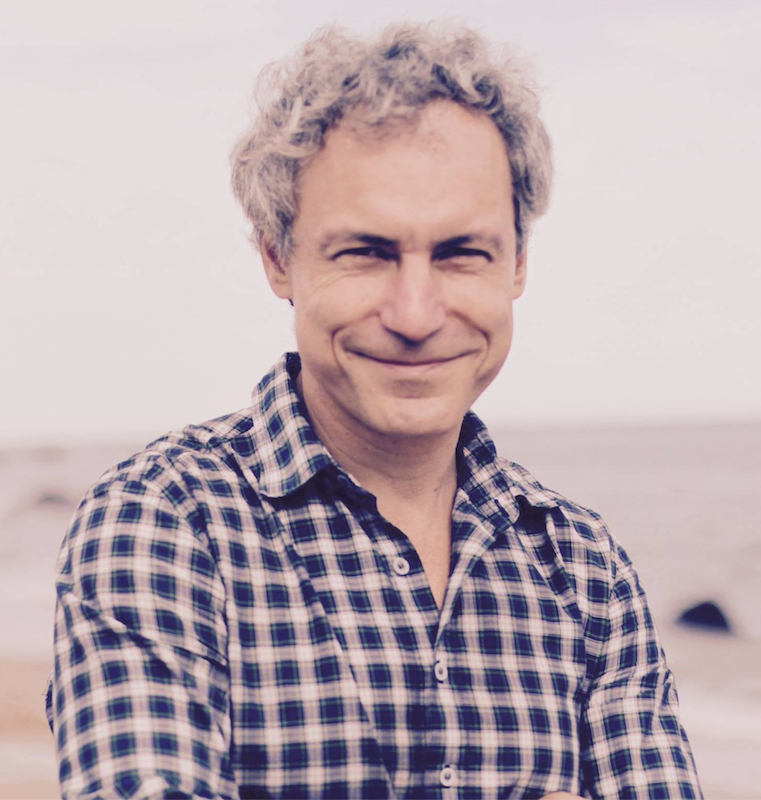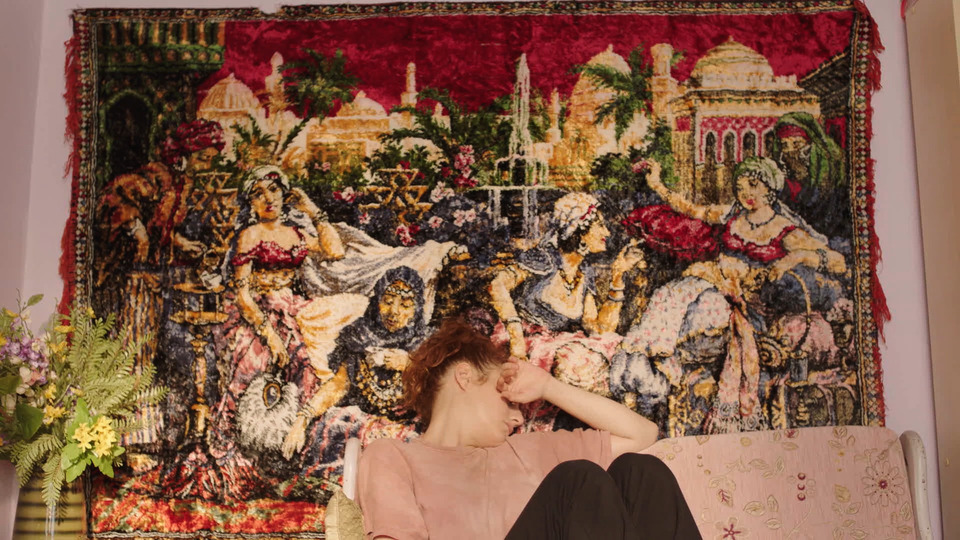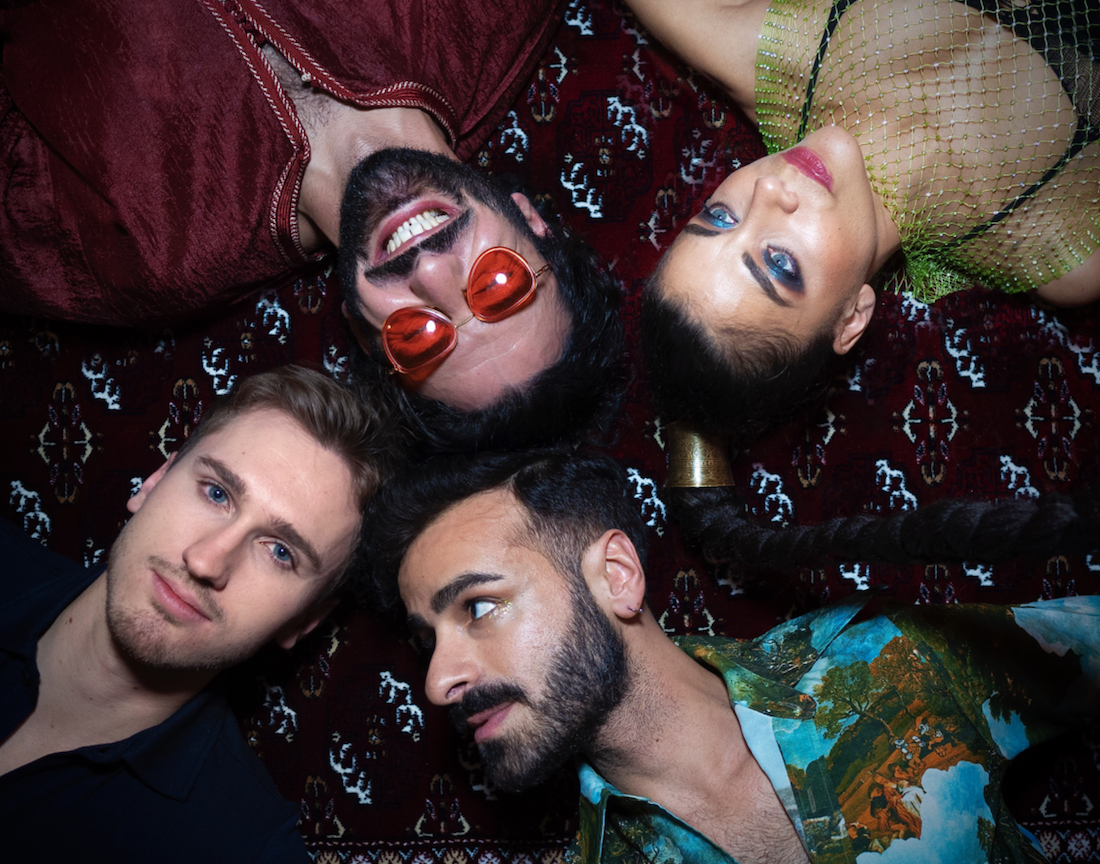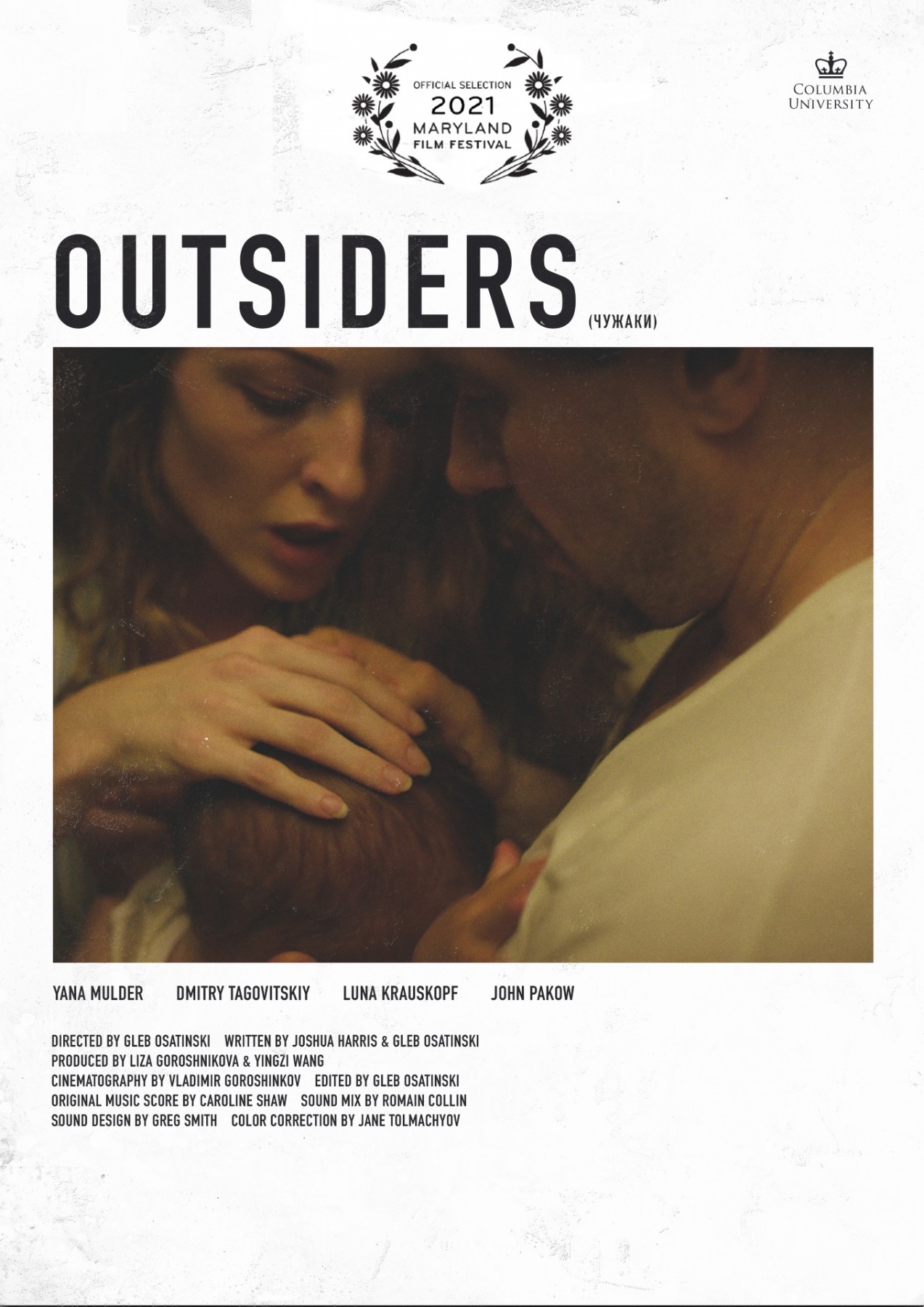For the 2021 edition of T-Port Lighthouse Selections – our curated program of short films by emerging talent, we discussed with the filmmakers about their artistic journey, their challenges in the filmmaking process as well as their sources of inspiration.
Here we present the second part in the series of interviews from the shorts selected by guest curator Céline Roustan.

Tell us about yourself.
Gleb Osatinski, director of “Outsiders”:
I am a Writer/Director from New York. I was born in Ukraine, where I have received a Master’s degree in Physics from the Kharkiv State Polytechnic University. I immigrated to the USA with my family, and after the immigration, I also received a Business degree in Finance and Computer Science from New York University. After completing a few short films, I have been accepted to the Columbia University MFA program, where I’m currently working on my thesis short film Resentment.
Zeynep Dilan Süren, director of “Great Istanbul depression”:
I am 27 years old. I have graduated from film school. I am currently working on my first feature film.
Naures Sager, director of “1-1”:
My name is Naures Sager and I’m 34 years old. I have Iraqi parents and I grew up in Sweden. I run a company called “The Uneven” with my boyfriend Michael Detlef. Our productions are about LGBTQ+ rights with a focus on people from the Middle East. Our film 1-1 has been touring for the past two years or so and will be screened on SVT Play for a total of 3 years. Our new short film Habib & The Thief started its festival tour in November 2021 and will also be available on SVT Play. We are currently developing a feature film called The Love Pill.
Can you tell us about your first encounter with cinema – do you recall your first memory from watching a film?
Naures Sager:
The first film I ever saw in the cinema was Titanic in 1997. I was 10 years old and my whole family was there. It was quite a spectacular experience.

Naures Sager
If you had to summarize your film in three words, what would they be?
Naures Sager:
Sexy, Queer, Arab.
Gleb Osatinski:
New York. Family. Life.
Zeynep Dilan Süren:
Depressed, manic, hopeful.

Zeynep Dilan Süren
Where did you draw inspiration working on your film?
Naures Sager:
It’s based on events that has happened in my life such as the sex prank. Some of the backstories that are told in the film are also from my own life. A recurring joke among the four actors was “we’re all playing you, right?”.
Gleb Osatinski:
This story came from a world both frightening and familiar to me. Tapping into my own immigrant experience living in New York, I chose Russian immigrants as actors who could connect with the themes of fear and isolation. A Russian couple lives in a claustrophobic, crib-like apartment with their newborn, trapped like toddlers themselves in a foreign place. I’m drawn to the father character. He’s working hard to reject his limitations, but after a minor defeat, he is forced to confront himself.

Gleb Osatinski
Next to filmmaking, what do you consider as your passions in life? And how do these passions connect to your filmmaking work?
Naures Sager:
My first passion and biggest dream as a kid was to be a singer-songwriter.
I finally managed to record my own song and include it in my latest short film “Habib & The Thief”. I plan on making a full soundtrack for my upcoming feature film “The Love Pill”.
Gleb Osatinski:
I really love music. I love to listen to and discover new albums, music, and artists. Since the early 90ies, New York was a bit of a different place. There were a lot of music stores in the Greenwich Village or Lower East Side. So, before things became more digital, I would go to old vintage stores and spend hours choosing music from the old records or CDs. I’d spent hours in these stores just listening. Now, it is a bit harder to do because many of them are closed throughout New York City, but I am still doing this. I have a few records stores where I love to go and spend time listening to old records getting lost on the shelves. I own a record player at home. There is nothing better than listening to an old record.
Music plays an essential role in my films and often comes first before I tell the story. It transports me when I write scripts and helps me to connect with the world I create. It helps me to feel the beats of the story. And when I edit, I also often use a temporary score that helps me to edit and find the rhythm in the film. With Outsiders I applied music differently. I experimented to create a rhythm without the score, creating a rhythm with the ambience, but when I actually had cut the film I felt the need to experiment with the score and aligned it on the top of what I had. I was amazed how the score transported the film to the next level. Somehow, the score created a new dimension and opened a new possibility to experience the story and connect with its characters.
What is the best thing you recently watched or experienced?
Naures Sager:
“The White Lotus” was very juicy.
Gleb Osatinski:
I was fortunate to be in a theater and see ‘Lehman Trilogy’ on Broadway. It was a very moving experience to come back to the theater after almost two years of the pandemic. Being inside with other people, watching performances made me feel the creative energy shared among people inside. How we take it from the scene and move it around while we are watching is unique. It made me feel how much I missed going to the movies and how pandemics limited human contact for such a long time. I hope we can get back to normal eventually and catch up on the time we missed together.

From “Great Istanbul Depression”
Which film do you find overrated, and why?
Naures Sager:
I didn’t find “Call me by your name” to be that hot.
Gleb Osatinski:
I thought “Dunkirk” by Chris Nolan had magnificent cinematography and production design, but it left me feeling almost nothing. I think the movie shouldn’t be about the director and about how huge the idea of the film should be, but rather it should be about the story and its characters. I get it, it is nice to see a spectacle on a big screen, but when it comes to films about the war, I don’t know if this should be the goal to make entertainment. I grew up in the USSR, and I have watched a lot of films about WWII. It was a tragedy that killed millions and not a spectacle and unfortunately, Dunkirk falls into that category for me. I thought of a film about war that comes into my mind that impacted me is “Come and See” by Efrem Klimov. If you haven’t seen it, go and see it. That film will change your impression of the war forever.
Tell us about a filmmaker that you admire and why?
Naures Sager:
I really love Dan Levy and the work that he did with his father on “Schitt’s Creek”. That series spoke to me in so many different ways and I can’t wait to see what he comes up with next.
Gleb Osatinski:
My favorite director that I truly admire is Andrey Tarkovsky. I think he has been the greatest influence on me and my work. I admire the reflection of poetry in his work and his unique ability to arrive at metaphorical images in his films that often are both integral to daily life and yet have infinitely resonant meaning that triggers something that is often hard to describe in words. He is able to depict emotions that live long-surviving through time.
Zeynep Dilan Süren:
Xavier Dolan.

From “Outsiders”
Tell us a bit about your film and the filmmaking process – what were your main insights?
Naures Sager:
When I was single I used to put every guy I dated up for a test to see if he could handle me and all my shenanigans and that was the core of the story.
Gleb Osatinski:
Music comes first, then the story; then the collaboration with actors, and then with the crew. As the story evolves, I begin conversations with the cast and crew about the world of the film and reasons for making it; what triggered the story, and why it’s important to me. I then create a lookbook, which develops as I work with my cinematographer, art designer, colorist, composer, and sound designer. These conversations help refine the film’s style – the choice of shots, lenses, framing, color schemes, and the mood I’m looking to create. But whether on set or in the editing room I always see myself as part of a team. Yes, the leader of the team, motivating the others to a greater film through our collective effort.
What were the biggest challenges you encountered during making your film?
Naures Sager:
I had five months to finish the film so it was a challenge to be done in time for the premiere.
Gleb Osatinski:
There are a lot of challenges to make the film. I think the biggest challenge is to trust the story and be true to it, but that also has a danger of you becoming delusional. I think for me it’s important to hear reactions to the story from the people I trust. Finding these right people who support your idea is very hard. But once you have them, it’s a hard start for the film to be made. I think surrounding yourself with the right people is the most important thing in filmmaking. Film cannot be done by one person. It’s the collective thinking and collective effort of many artists. So building that artists team is the most important next step before the creation. With Outsiders it was like this. I was very fortunate to meet Vladimir Goroshnikov, a Director of Photography. We spent a lot of time together brainstorming how we would like to see the film. We came up with the references and deconstructed our scenes in Outsiders. We came up with the storyboard which we trusted would work. Then, Vladimir introduced me to his wife Liza Goroshnikova who became my creative producer. She was very kind to offer to shoot in their apartment which we decorated for the film. I loved working with Markus Wuff, my friend and collaborator from Columbia. We both loved the works of Fasbinder, and it helped us with decorations.

From “1-1”
Tell us about the visual choices in your film. What were your main goals and techniques in creating the visual style of your film?
Gleb Osatinski:
I wanted to create a very tight space where the family lives. I wanted them to hide inside. I wanted to create a feeling that this family felt like toddlers themselves, and their apartment would feel like a crib. That’s how you feel when you immigrate to a new place. It’s a new world, new laws, and you feel unprotected. The camera choices were deliberate. I wanted to keep the camera very close to them and keep movements motivated and rarely interrupted. I felt that the space that has to be created will be limited by the camera frame and they would have to almost fight for it. I was influenced by Fasbinder and also most recently by Kantimir Balagrov. And there are a lot of great films coming to form Sakurov’s school in Russia. I also loved the latest work of Valeriy Todorovskiy.
Tell us about the sound choices in your film.
Naures Sager:
There is a drum called Kasoor that I always love to dance to at Arabic weddings and parties. I went out of my way to find someone who could record it and then we created music for the party scene with it.
Gleb Osatinski:
Initially, I wanted to use ambience and silence in the film. It would be a deafening silence, just voices in the dialog and just sounds of the room that the family lives in. But then, when the film was made, I showed it to my professor at Columbia, Bette Gordon (Variety), who is my advisor now for my thesis film Resentment. Bette asked me to try to add the score and see where this would take me. I found Caroline Shaw “Orange”. music. It impressed me so much, and I wanted to try to fit it into the film. But first before trying, I sent Caroline an email asking if I could use her score in the film, and she replied quite quickly. So, when I tried, it didn’t fit quite well, and I spent a few hours with the composer Romain Colin. Romain and I worked together from my first film Pisces of an Unconscious Mind, The House at the Edge of the Galaxy, and The Quantified Self, he was writing score with me, and this time, this was an unusual work because the music was already written. We tried to place the score in various places in the film and it just didn’t work right, somehow. I left home, and gave it another try, and somehow, it all worked. Beginning, middle and end. I showed it to Romain, and he enhanced the score slightly to fit the rhythm of the scene better. When all was ready, the score created another dimension for the film. I am so very happy that I tried this process and allowed the score in this film.

What would you like people to take away from your film?
Naures Sager:
That there is a new bold generation of Arabs fighting for LGBTQ+ rights and equality.
Gleb Osatinski:
I think I wanted to show that the environment that we live in sometimes changes us. What we have lived in the past four years, reminds us about how vulnerable we are. But I think what’s important for us to remember is that we are all humans, without status, without paperwork, without any other things that might separate us from each other. I wanted to show the situation where a simple decision that this family experiences is hard to make. But why? Why should it be? Why should we ever question our safety while living in a society and not protected by humanity? Why shouldn’t be human and not legislative laws come first and humanity second? Why shouldn’t we consult our hearts and make them dictate what’s right or wrong and not just blindly follow laws that often create boundaries that confine us. I feel that fear of being separated from each other for this family paralyzes them to make a decision to run into the hospital. But they are family! It was an incident. And yet, they are afraid to be helped by the society they live in. It’s clearly wrong. It’s clearly not human. And yet, this is what they felt and they had all rights for it because of the times we live in in the past few years. It’s time to stop and think about where we have gone and why.
What is your fantasy film project?
Gleb Osatinski:
As a scientist, I am also very drawn to fantasies. I have written one idea and a film idea that I always wanted to make. It’s a fantasy where memories, times, moments from the past, future, are all combined, and physics laws stop functioning the way we know. It’s a moment when the Earth stops, and everything flies, and when it ends, we all find ourselves at the moment of the restart. It’s a moment we realize we loved, cared, connected, almost destroyed, but alive. I think it is also a moment of realization that something in the past could have been done differently with a small adjustment, and had this adjustment been done, we would have had another future. That’s just a thought about one fantasy film. But I have many. I just don’t have much time.
Follow the filmmakers & films on Social Media:
Naures Sager:
The Uneven site | The Uneven IG | The Uneven FB | Naures’s IG | Naures’s FB
Gleb Osatinski:
Zeynep Dilan Süren:
IG | Film’s IG | Film’s Twitter
Back to T-Port Blog
